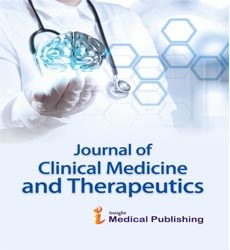Genes of the Nuclear-Pore Complex Genes
Abstract
According to the WHO, influenza is one of the most pressing problems in world health. Every year, about 500 thousand people die due not only to the infection itself, but also from the complications it causes [1]. Because of their high variability, influenza viruses rapidly develop resistance to many traditional anti-influenza therapies [2]. The development of drugs based on the mechanism of gene silencing using siRNA is a promising direction. Objective: To assess the decrease in viral reproduction in cells with reduced expression of the genes of the nuclear-pore complex Nup98 and Nup205. Materials and methods. Viruses. We used the influenza A / WSN / 1933 virus strain (St. Jude's Children's Research Hospital, USA). Cell lines. A549 cell culture - human lung adenocarcinoma (ATCC® CCL-185, USA), MDCK cell culture â?? dogs ren (Institut Pasteur, France). siRNA. Sequences (Nup98.1 (miRNA1), Nup98.2 (miRNA2), Nup205) to mRNA of target genes (Syntol, RF). Nonspecific siRNA L2 was also synthesized to assess the functionality of working miRNAs. Transfection agent. Lipofectamin2000 (Invitrogen, USA). A549 cells were seeded in 12-well plates, then treated with siRNA and Lipofectamin2000 complexes. After 4 hours, the transfected cells were infected with the influenza virus at an MOI of 0.01. The supernatant was collected within three days from the moment of transfection, then the change in viral activity was assessed using CPP titration and hemagglutination reaction. Expression of target genes after siRNA treatment and the amount of vRNA were determined using RT-PCR-RT. To calculate statistically significant differences between groups, the authors used the nonparametric Mann-Whitney test. Research results. According to the results of the study, in cells treated with siRNA to the Nup205 gene, viral reproduction decreased 10 times on the 1st day and 100 times on the next day relative to the control. In cells treated with miRNA1 and miRNA2 to the N98 gene, a significant decrease in reproduction for miRNA1 by 100 was observed on the 2nd day, and for miRNA2, by 100 times on the 3rd day, respectively, relative to the control. According to the results of hemagglutination, the amount of virus on the third day decreased 16 times for the Nup205 gene, and 8 times for the Nup98 gene. Conclusions. Studies have shown that the treatment of cells with miRNA directed to the genes of the nuclear-pore complex Nup98 and Nup205 results in a significant decrease in viral reproduction
Open Access Journals
- Aquaculture & Veterinary Science
- Chemistry & Chemical Sciences
- Clinical Sciences
- Engineering
- General Science
- Genetics & Molecular Biology
- Health Care & Nursing
- Immunology & Microbiology
- Materials Science
- Mathematics & Physics
- Medical Sciences
- Neurology & Psychiatry
- Oncology & Cancer Science
- Pharmaceutical Sciences
